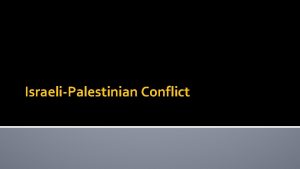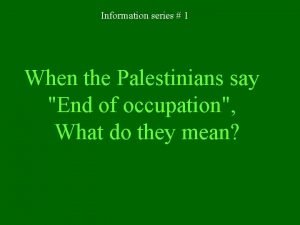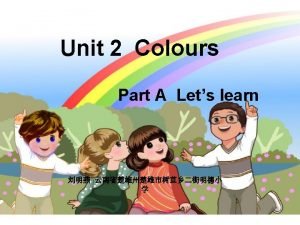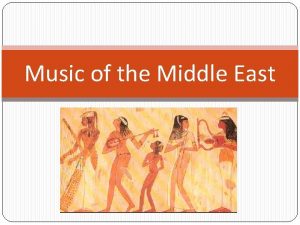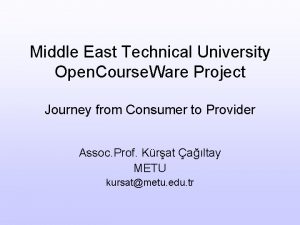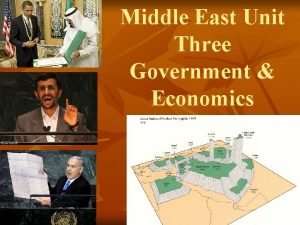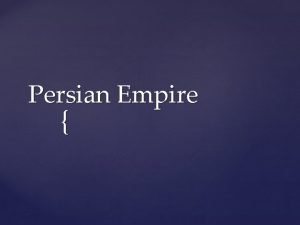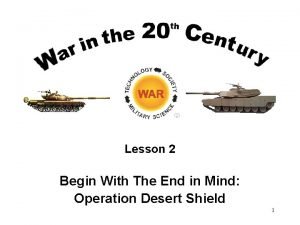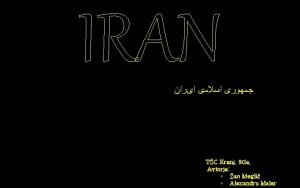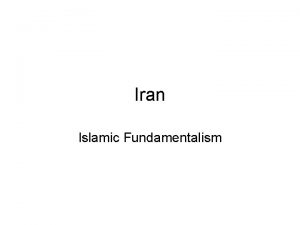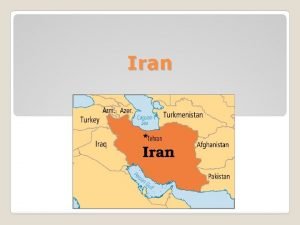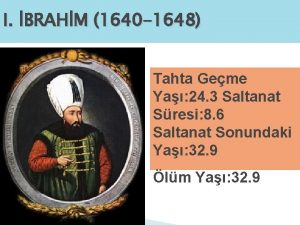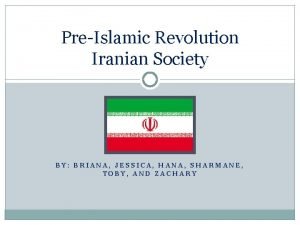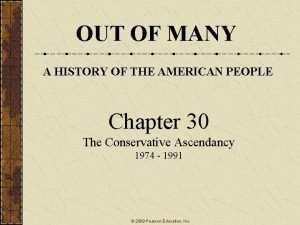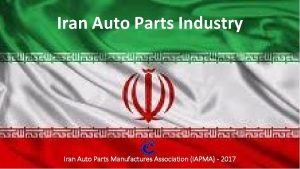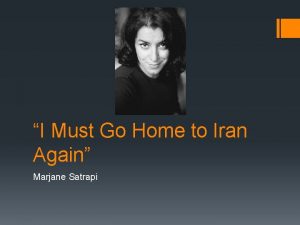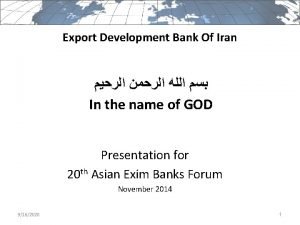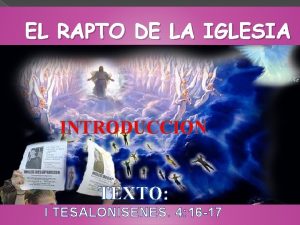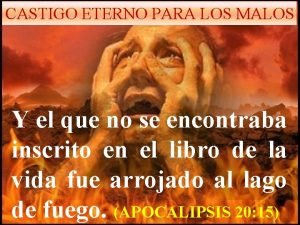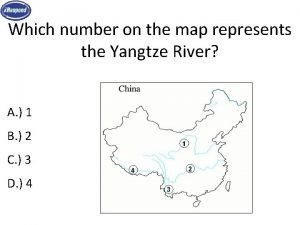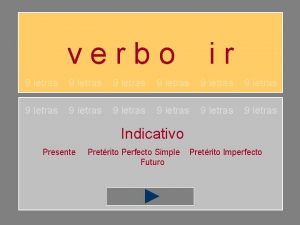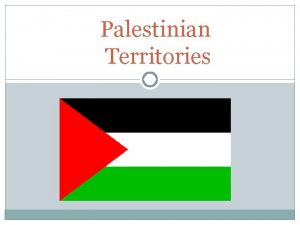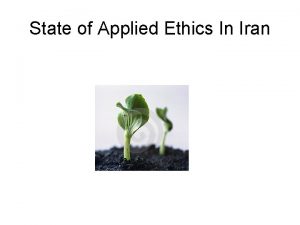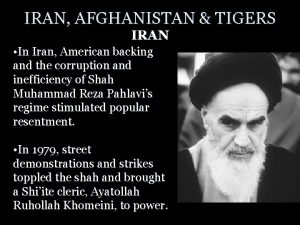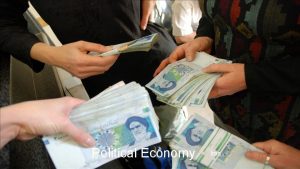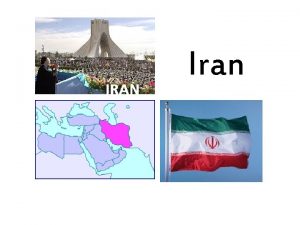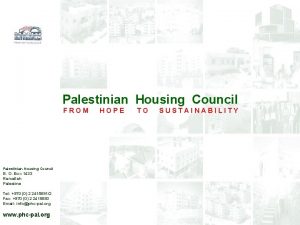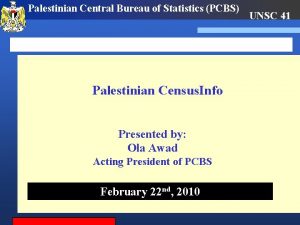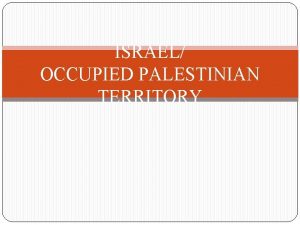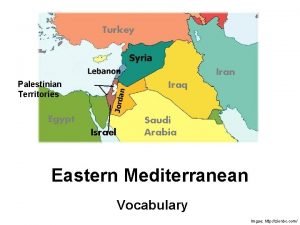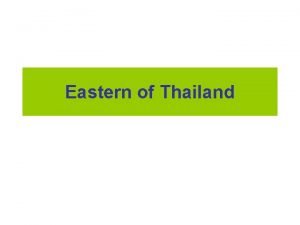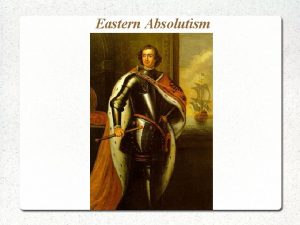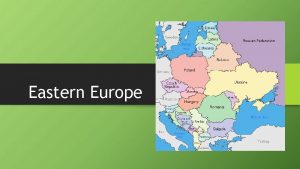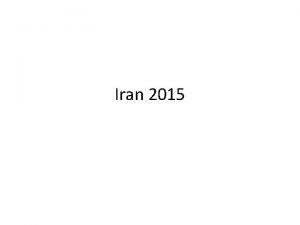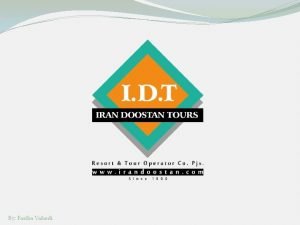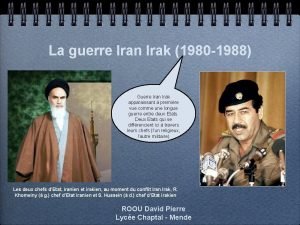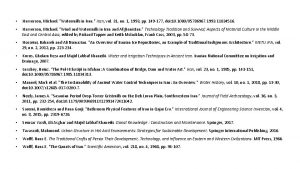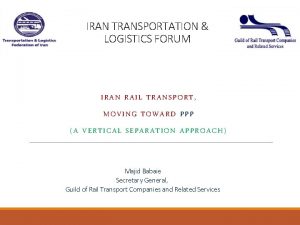Middle Eastern Movement Green Movement in Iran Palestinian























- Slides: 23

Middle Eastern Movement Green Movement in Iran, Palestinian Movement

Iran Islamic revolution also known as the Islamic Revolution of Iran was a monarchy founded by Shah Mohammed Pahlavi before the Green Revolution. Pahlavi wanted did some secular changing in Iran. People generally were migrate from the village of Iran to Tahran and bıg cıty and they were supported Islamic aim and clergy.

The Sii clergy always had a great influence on the part of the Iranian population, which was religious and traditional and rejected Western influence in Iranian society. The clergy first showed themselves to be a powerful political force in opposition to Iran's monarch with the 1891 ‘Tabacco Protest’ boycott that effectively destroyed an unpopular concession granted by the Shah giving a British company a monopoly over buying and selling tobacco in Iran.

Mohammad Reza Shah Pahlavi maintained a close relationship with the U. S. government, both regimes sharing an opposition to the expansion of the Soviet Union, Iran's powerful northern neighbor. Because of Shah was known for its outocracy, its focused on modernization and westernization for digregard for religious and democratic measures in Iranian constitution. Leftist, nationalist and Islamist groups attacked his government for violating the Iranian constitution, political correction and the political oppression by the SAVAK (secret

The Shah was taken completely by surprise by the scale of the protests (he could not believe people that he believed he worked for so dilligently were angry at him) In this interim period of disaffected calm the budding Iranian revival began to undermine the idea of Westernization as progress that was the basis of the Shah's secular reign, and to form the ideology of the 1979 revolution.

Most importantly, Khomeini preached that revolt, and especially martyrdom, against injustice and tyranny was part of Shia Islam and that Muslims should reject the influence of both liberal capitalism and communism with the slogan "Neither East, nor West – Islamic Republic!"

Khomeini worked to unite this opposition behind him (with the exception of the unwanted `atheistic Marxists`) focusing on the socio-economic problems of the Shah's government (corruption and unequal income and development) while avoiding specifics among the general public that might divide the factions, particularly his plan for clerical rule which he believed most Iranians had become prejudiced against as a result of propaganda campaign by Western imperialist

START REVOLUTION By 1977, the Shah's policy of political liberalization was underway. As a result, with less SAVAK surveillance, for the first time in a decade and a half, opposition figures were able to organize. Secular middle class opponents of the Shah began to meet together in crowds denouncing the government. The Shah was increasingly angered by Khomeini's actions, who was gaining popularity due to his "nocompromise" attitude towards his government. As a result, he decided to order the publication of a slanderous article (under a pseudonym.

The very same day, hardline religious students who supported Khomeini in the city of Qom (home to the religious schools and an important seat of Shia Islam) began to protest. They marched down the streets of the city, voicing their anger at the insult to Khomeini. Some of the students rampaged throughout the city, setting fire to anything they saw as being "un-Islamic", such as girl's schools, movie theaters, restaurants, etc. They finally did, and the death toll was 2 policemen and 6 protesters.

Summary Protesters clashed with riot police, and the opposition reported that at least 27 people were killed. However, the government claimed that police were banned from using bullets, and gave evidence claiming that protesters believed car accident victims at morgue were victims of police fire. This amounted to an “almost fully mobilized mosque network, both the liberal and pious Muslim middle classes, but a small minority of the more than 15 million adults in Iran. The Shah still allegedly had the support of much of the population (the socalled "silent majority"), being both apolitical or

The Shah tasked Prime Minister Jamshid Amuzegar to began carrying out reforms as well, including ending price control measures. The Shah also announced that he would allow for completely free elections by the next June, and that Iran would become a "full democracy", and allowed for the immediate implementation of freedom of speech, expression, and the press. For the time being, the protests seemed to be over. Although tensions remained in the air, the Shah's "carrot and stick" policy appeared to have worked. The people's listening to Shariatmadari instead of Khomeini led Amuzegar to declare that "the crisis is over".

On 19 August, in the city of Abadan four arsonists barred the door of the Cinema Rex movie theater and using chemical agents set it ablaze. In what was the largest terrorist attack in history prior to the September 11, 2001 attacks 422 people inside theater were burned to death. Movie theaters had been a common target of Islamist demonstrators, and over 50 had been burned down already in "symbolic acts of destruction"

Declaration of Martial Law and Black Friday The Shah's continued concessions to the opposition instead emboldened Khomeini. He called on the Iranian people to carry out mass protests. Protesters were on the streets, shouting "Death to the Shah" and "Khomeini is our Leader", but otherwise protesting peacefully Rattled by the rapidly increasing protests, on midnight of September the Shah adopted a hard line approach to the demonstrations. He declared martial low in Tehran and ll other major cities throughout the country.

The Shah believed that the show of force would be enough to deter the protesters from actually taking to the streets, and news bulletins informing the public that martial law had been declared were to be broadcast every thirty minutes. However, it was a serious miscalculation on part of the monarch. The main crowd that was marching reached Jaleh Square in central Tehran, when they discovered that armed soldiers and tanks were blocking their path.

The army warned the crowds by megaphones disperse, which they failed to do. What happened next is disputed, but several armed members hiding among the crowd began firing weapons and killed several soldiers. Both sides claimed that the other fired first. The soldiers fired wildly into the crowd, killing 64 unarmed protesters with the additional clashes between soldiers and the opposition bringing the death toll to 89. The day would become known as Black Friday.

Shah By mid-December the Shah's position had deteriorated to the point where he "wanted only to be allowed to stay in Iran he agreed to leave the country temporarily; still he was turned down. On January 16, 1979 the Shah and the empress left Iran. Scenes of spontaneous joy followed and "within hours almost every sign of the Pahlavi dynasty" was destroyed. Khomeini's return and fall of the monarchy

On February 1, 1979 Humeyni returned to Tehran in a chartered Air France. The welcoming crowd of several million Iranians was so large he was forced to take a helicopter after the car he was being transported in from the airport was overwhelmed by an enthusiastic welcoming crowd. Khomeini was now not only the undisputed leader of the revolution, he had become what some called a "semi-divine" figure, greeted as he descended from his airplane with cries of 'Khomeini, O Imam, we

1979 uprisings Following the events of the revolution, Marxist guerrillas and federalist parties revolted in some regions comprising Khuzistan, Kurdistan and Gonbade Qabus, which resulted in fighting between them and revolutionary forces. These revolts began in April 1979 and lasted between several months to over a year, depending on the region.

Islamist left In January 1980 Abolhassan Bonisadr was elected president of Iran. Though an adviser to Khomeini, he was a leftist who clashed with another ally of Khomeini, theocratic Islamic Republic Party (IRP) – the controlling power in the new parliament. At the same time, erstwhile revolutionary allies of Khomeini – the Islamist modernist guerrilla group People’s Mujahidi of Iranian (or MEK) – were being suppressed by Khomeini's revolutionary organizations.

Khomeini attacked the MEK as hypocrites and unbelievers Hezbollahi people attacked meeting places, bookstores, newsstands of Mujahideen and other leftists driving them underground. Universities were closed to purge them of opponents of theocratic rule as a part of the culturel revolution and 20, 000 teachers and nearly 8, 000 military officers deemed too westernized were dismissed.

Conclusion Views differ on the impact of the revolution. For some it was "the most significant, hopeful and profound event in the entirety of contemporary Islamic history, " while other Iranians believe that the revolution was a time when "for a few years we all lost our minds and which "promised us heaven, but created a hell on earth. Literacy has continued to increase under the Islamic Republic which uses Islamic principles.

People have more power than equivalent organs in the Shah's government Women – especially those from traditional backgrounds – participated on a large scale in demonstrations leading up to the revolution. Since the revolution university enrollment and the number of women in the civil service and higher education has risen and several women have been elected to the Iranian Parliament.

The End Yetiş PAYÇU
 Israeli-palestinian conflict dbq answers
Israeli-palestinian conflict dbq answers Israeli palestinian conflict muffin
Israeli palestinian conflict muffin Red green show
Red green show Aerophone
Aerophone Metu computer center
Metu computer center Middle east map
Middle east map Middle eastern geography
Middle eastern geography Satrapy of iran
Satrapy of iran Iran hostage crisis timeline
Iran hostage crisis timeline Iran prebivalstvo
Iran prebivalstvo Iran cat map
Iran cat map Iran pre 1935
Iran pre 1935 Iran'la sınırımızı belirleyen antlaşma
Iran'la sınırımızı belirleyen antlaşma Oliver north iran contra affair
Oliver north iran contra affair Iran religion
Iran religion Oliver north iran contra affair
Oliver north iran contra affair Language in iran
Language in iran Iran auto parts
Iran auto parts I must go home to iran again
I must go home to iran again Export development bank of iran
Export development bank of iran Cuando sucederá el rapto de la iglesia
Cuando sucederá el rapto de la iglesia Castigo eterno biblia
Castigo eterno biblia Which number on the map represents the country of india?
Which number on the map represents the country of india? Verbo presente pasado y futuro
Verbo presente pasado y futuro
